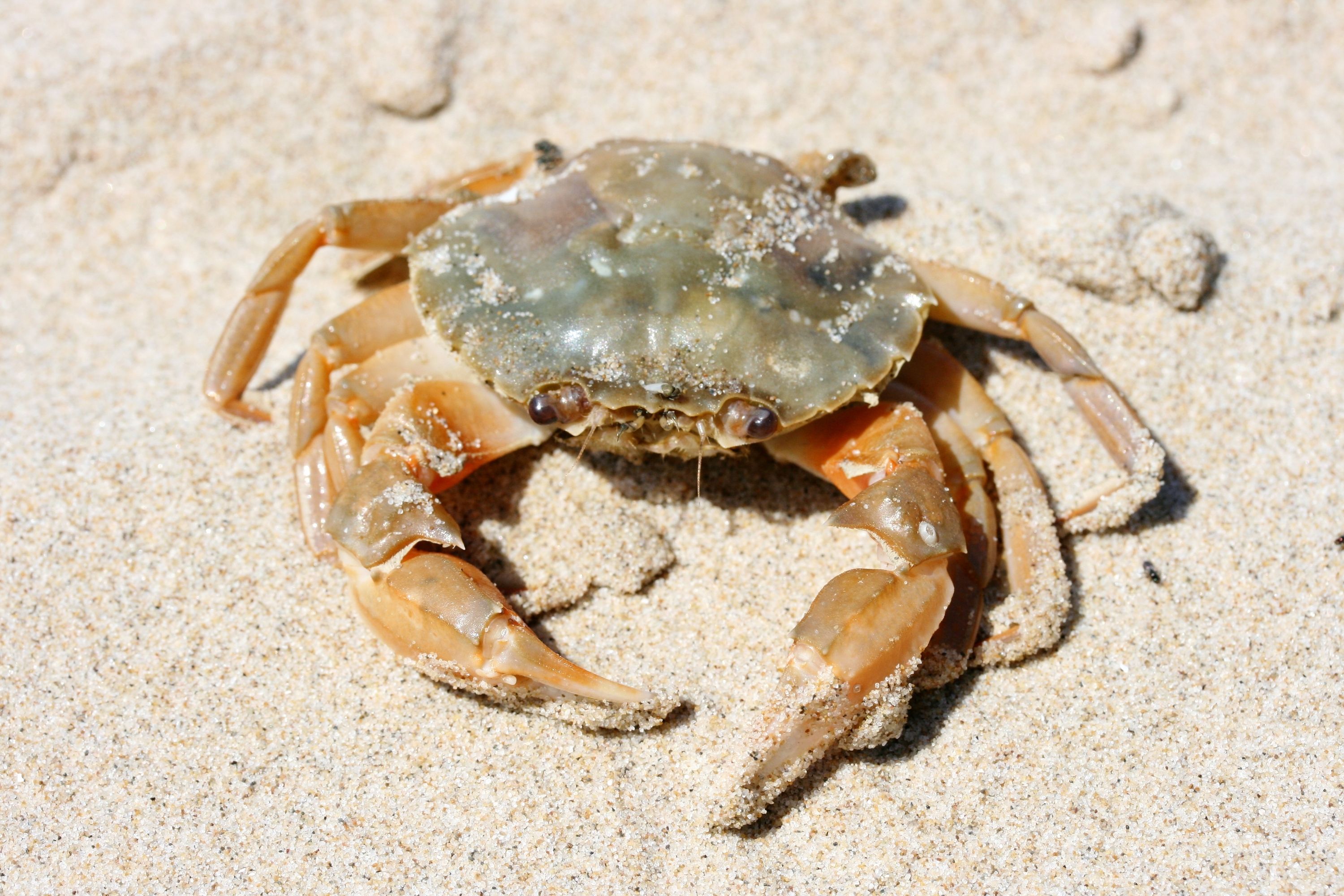European green crab
(Carcinus maenas)

Description
Carcinus maenas is a common littoral crab. It is known by different names around the world. In the British Isles, it is generally referred to as the shore crab, or green shore crab. In North America and South Africa, it bears the name green crab or European green crab. In Australia and New Zealand, it is referred to as either the European green crab or European shore crab. C. maenas is a widespread invasive species, listed among the 100 "world's worst alien invasive species". It is native to the north-east Atlantic Ocean and Baltic Sea, but has colonised similar habitats in Australia, South Africa, South America and both Atlantic and Pacific coasts of North America. It grows to a carapace width of 90 mm (3+1⁄2 in), and feeds on a variety of mollusks, worms, and small crustaceans, potentially affecting a number of fisheries. Its successful dispersal has occurred by a variety of mechanisms, such as on ships' hulls, sea planes, packing materials, and bivalves moved for aquaculture. C. maenas has a carapace up to 60 mm (2.4 in) long and 90 mm (3.5 in) wide, but can be larger outside its native range, reaching 100 mm (3.9 in) wide in British Columbia. The carapace has five short teeth along the rim behind each eye, and three undulations between the eyes. The undulations, which protrude beyond the eyes, are the simplest means of distinguishing C. maenas from the closely related C. aestuarii, which can also be an invasive species. In C. aestuarii, the carapace lacks any bumps and extends forward beyond the eyes. Another characteristic for distinguishing the two species is the form of the first and second pleopods (collectively the gonopods), which are straight and parallel in C. aestuarii, but curve outwards in C. maenas. The colour of C. maenas varies greatly, from green to brown, grey, or red. This variation has a genetic component, but is largely due to local environmental factors. In particular, individuals which delay moulting become red-coloured rather than green. Red individuals are stronger and more aggressive, but are less tolerant of environmental stresses, such as low salinity or hypoxia. Juvenile crabs on average display greater patterning than adults.
Taxonomic tree:







